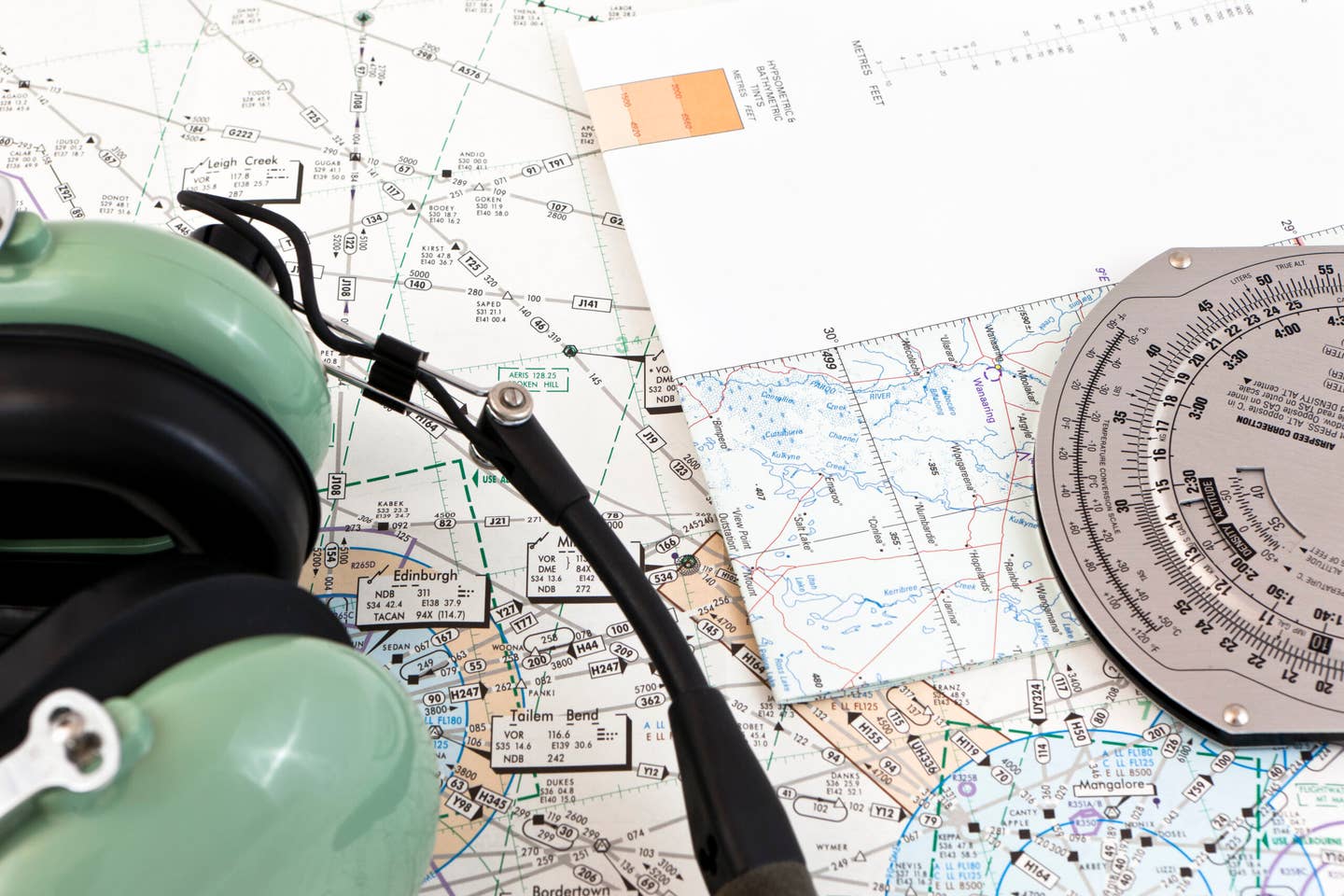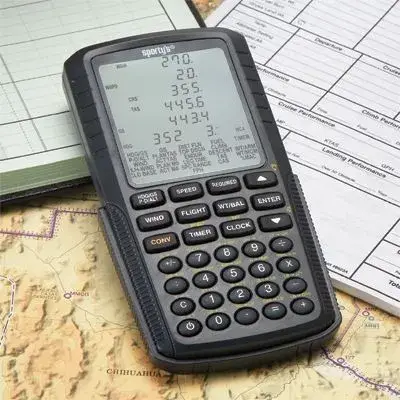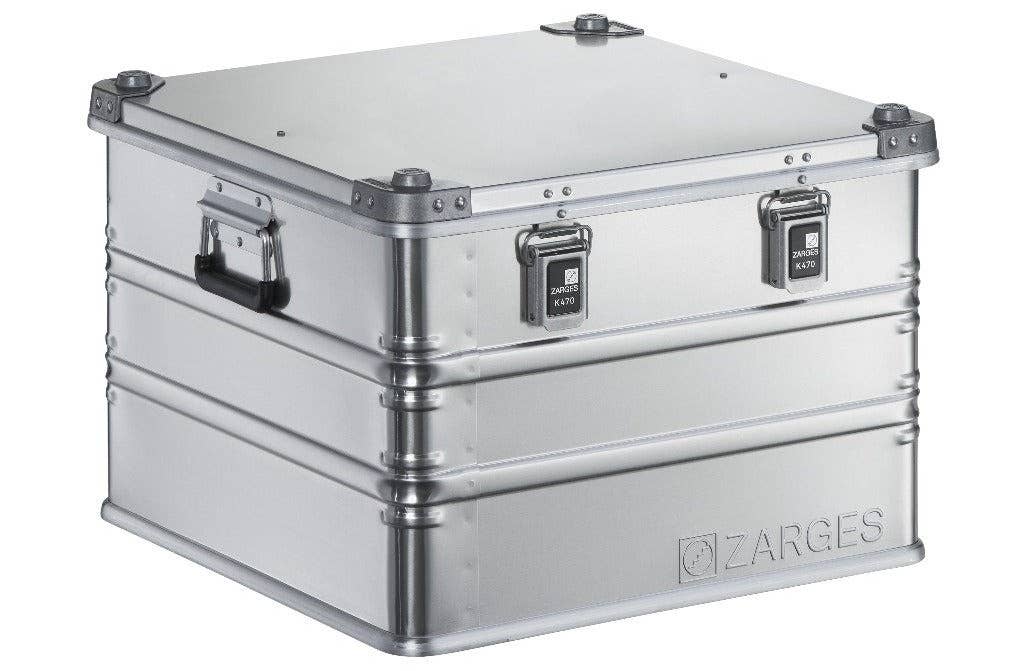How To Plan a Cross-Country Flight
Planning is critical to a safe and successful cross country flight. Learn how to plan a cross country flight by following a simple, detailed checklist.

[iStock]
A cross-country flight requires detailed planning and consideration of a number of factors, from aircraft capabilities and route plans to wind speeds and weather patterns. The best method for creating a safe and successful cross-country flight plan is to follow a simple, detailed checklist. In this article you will learn what a cross-country flight is, what requirements must be met to achieve a cross-country flight, how to build a cross-country flight plan, and what aspects to consider when creating your cross-country flight plans.
What is a Cross-Country Flight?
A cross-country flight, also denoted as an XC flight, is defined as a flight landing at a point other than the departure point, using navigational methods and aids to navigate the landing. A certain number of cross-country flight hours are required by the FAA to earn various pilot certificates. There are also specific distance requirements to consider when cross-country flight planning, based on the pilot’s desired flight certificate. For example, a landing distance greater than 50 nm is required to earn an ATP certificate, whereas a sport pilot certificate only requires a pilot to exceed 25 nm from the departure point to qualify as a cross-country flight.
Save money during flight lessons, and become a better IFR pilot with Sporty’s complete Instrument Rating Course.
Download NowWhy Does Time Matter for Flying Cross Country?
Cross-country flight logging is important because the logged hours must add up to the required number of hours necessary to obtain your next pilot certificate.
8 Steps for Planning a Cross-Country Flight
There are critical steps which must be taken when XC flight planning, from a requirements checklist to filing your flight plans. Follow the list below to ensure a safe and successful XC flight.
Step 1: Make Sure You Meet the Requirements
You will want to make sure that you understand the requirements for a cross-country flight so that you can meet them and have the flight time and distance credited as cross-country flying for your next certificate or rating.
A cross-country flight must include:
- Straight-line distance of a minimum of 50 nm from departure point
- Use of navigation techniques—ead reckoning, electronic and radio aids
Different XC flight requirements exist for each type of certificate. For example, a private pilot certificate requires:
- Three hours of XC flight instruction time
- One night time XC flight of 100 nm or more
- Five hours of solo XC flight time
- One solo XC flight of at least 150 nm total distance, with three landing points, and one leg being over 50 nm
Step 2: Obtain a Current Weather Briefing
The best way to obtain a weather briefing is by contacting an FAA Flight Service Station (FSS). They are trained to help pilots understand and obtain weather information for preparing flight plans.
Step 3: Choose an Altitude and Cruise Profile
Choosing an altitude for a cross-country flight plan should be based on the performance of your aircraft, obstacles to avoid, weather patterns, and the direction you’re traveling. The higher the altitude the better the fuel efficiency, however, the climb and weather elements can play critical roles when choosing your altitude. You should refer to your pilot information manual to determine the most efficient cruise profile for your specific aircraft and route.
Step 4: Calculate Airspeed, Time, and Distance
Basic calculations are required to accurately determine airspeed, time, and distance.
- Time is determined by dividing the Distance (D) by the GS (Ground Speed, aka Airspeed)
- T=D/GS
- Distance is determined by multiplying the GS by Time.
- D=GS x T
- Airspeed is determined by dividing the distance flown by the time required.
- GS=D/T
If you wish to convert knots into miles per hour, you would multiply the number of knots or nautical miles per hour (nmph) by 1.15, which gives you mph .
- nmph x 1.15 = mph
All the easy-to-use features of the original, but adds a new, more rugged design and additional features.
Shop NowStep 5: Study Your Airport
You will want to study the runway maps of your departing airport, destination airport, and any potential emergency landing destinations along your route. You will also need to be familiar with the airports’ frequencies, communications, and flight regulations for your aircraft in the chosen airspace.
Step 6: Check Your Equipment
Make sure you know where all of your instruments and equipment are located, how they operate, and ensure that everything is in working order. Also, check that you have all the safety equipment, backups, and personal items necessary for your cross-country flight.
Step 7: Get an Updated Briefing
It typically takes a few hours to get through the first six steps of your cross-country flight planning, so you will want to obtain an updated weather briefing (step 2) prior to your departure.
Step 8: File a Flight Plan
The final step in your cross-country flight planning is to file a flight plan with the FAA. The flight plan form can be found on the FAA website You may call 1-800-WXBRIEF or use the website 1800WXBrief to file your flight plan.
There are also software options available which can be used to file your flight plan: https://www.fltplan.com/ or https://foreflight.com/
Plans are made, equipment is checked — now you’re ready to take your cross-country flight.
You have now navigated the seemingly daunting task of creating a cross-country flight plan. You are now fully prepared to take flight and enjoy your scenic journey filled with bold confidence, thanks to the detailed knowledge and meticulous checklists you now possess.
Stay up to date on all things aviation and learn more tips and flying techniques in FLYING magazine. Subscribe today.
If you're passionate about aviation, then FLYING Magazine is the perfect subscription for you. With in-depth features and profiles of all things aviation, FLYING has been the premier magazine for almost 100 years. Packed with stunning photography and fascinating stories, this is a must-read for anyone interested in aviation.
SubscribeFAQ
Can you fly cross country with a private pilot certificate?
Yes, private pilots can fly anywhere as long as they comply with airspace regulations.
How much does it cost to fly an airplane cross country?
A typical cross country flight must equal at least 50 nm one way, so the fuel cost of flying over 100 nm round trip, plus the cost of the aircraft rental must be calculated. Aircraft rentals average $125 per hour and the flight should take 3 hours at 115 mph. For example, a Cessna 172 burns around 8 gallons of fuel per hour and the average gallon of aircraft fuel is around $6, so the cost of the XC flight would be approximately $519. The cost of the aircraft rental and fuel consumption will vary depending upon the aircraft used.
Can you fly cross country VFR?
Yes. VFR pilots can fly any course they choose and can qualify as a cross country flight by landing 50 nm from the departure point, prior to returning.
Do you have to file a flight plan for VFR?
No, a VFR flight is not required to file a flight plan; however, a flight plan is still recommended because it is a way for search and rescue teams to locate you in the event of an accident.

Sign-up for newsletters & special offers!
Get the latest FLYING stories & special offers delivered directly to your inbox









